3. Computer-controlled cutting¶
3.1 Characterize the lasercutter(as group assignment)¶
3.1.1 Facilities¶
3.1.1.1 Speedy 100¶
The primary lasercutter in our lab is ‘Speedy 100’.

Technical data of Speedy 100
| Working area (W x D) | 610 x 305 mm |
| Max. height of workpiece | 170 mm |
| Laser type | CO2 |
| Laser power | 30W |
| Laser class | 2 |
| Focal length | 2 inches (approx. 5cm) |
| Max. processing speed | 2.8 m/s |
| Max. acceleration | 40 m/s² |
Material suitabiity (Manufacturer information)
| Material | Engrave | Cut |
| Acrylics | ✔ | ✔ |
| Glass | ✔ | - |
| Plastic sheets | ✔ | ✔ |
| Leather | ✔ | ✔ |
| Metal | - | - |
| Paper | ✔ | ✔ |
| Plastics | ✔ | ✔ |
| Stone | ✔ | - |
| Textiles | ✔ | ✔ |
| Wood | ✔ | ✔ |
3.1.1.2 Snapmaker 2.0¶
We also have another machine ‘Snapmaker 2.0’ which has a smaller laser head.
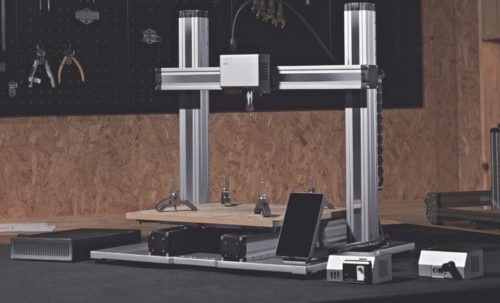
Technical data of Snapmaker 2.0
| Working area (W x D) | 320 x 350 mm |
| Max. height of workpiece | 330 mm |
| Laser type | 450 nm blue laser diode |
| Laser power | 1.6W |
| Laser class | 4 |
| Focal length | 1 inch (approx. 2.5cm) |
Material suitabiity (Manufacturer information)
| Material | Engrave | Cut |
| Acrylics(opaque) | ✔ | ✔ |
| Glass | - | - |
| Plastic sheets | ✔ | ✔ |
| Leather | ✔ | ✔ |
| Metal | - | - |
| Paper | ✔ | ✔ |
| Plastics | ✔ | ✔ |
| Stone | - | - |
| Textiles | ✔ | ✔ |
| Wood | ✔ | ✔ |
3.1.2 Cutting tests¶
As he is an only student in my Lab this year, so he refered the previous students’ archives and recycled the cutting template. The following documents are by students.
3.1.2.1 Inspection of the original data¶
I opened the template data( parametric_slot.f3d ) used to laser-cut test pieces by Fusion 360 and checked the contraints and user parameter settings.
Original sketch:

Original parameters:

3.1.2.2 Improvement on the data¶
The original data seemed better to be improved and simplified by introducing more constraints(equal, parallel, etc.), so I revised the data and saved it as Version 2( parametric_slot_V2.f3d ).
Revised sketch:

Revised parameters:
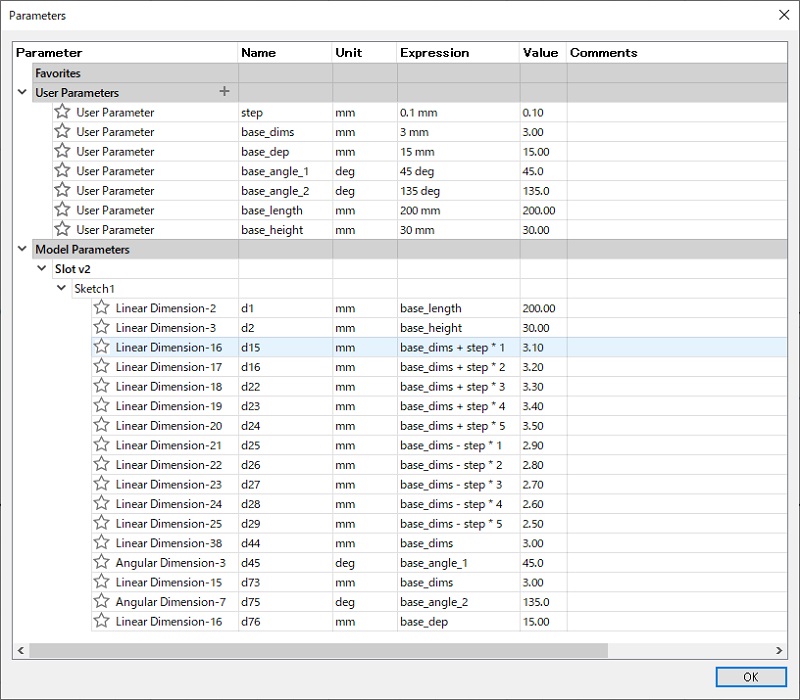
Output data files:
parametric_slot.ai
parametric_slot.f3d
parametric_slot.dxf
.ai format data can be opened by Illustrator and sent to the cutting software of ‘Speedy 100’.
.f3d is a standard Fusion 360 file format. It is useful to add various parametric constraints to the data.
.dxf format data is neccessary for the cutting sotware of ‘Snapmaker 2.0’
3.1.2.3 Test by ‘Speedy 100’¶
I ran the cutter using the template data with settings below and got a pretty good result.
| Material | Cardboard |
| Thickness | Approx. 3mm | Power | 90% |
| Speed | 280 mm/s |
| Pass | 2 times |
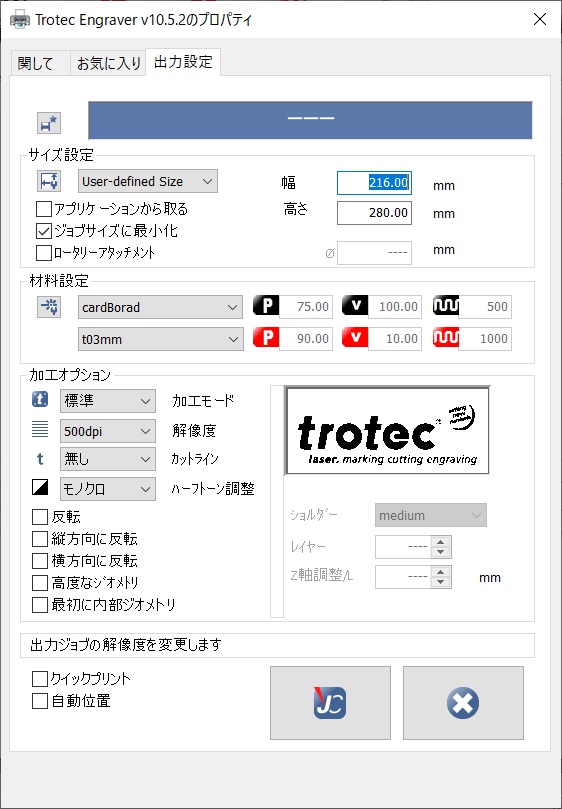
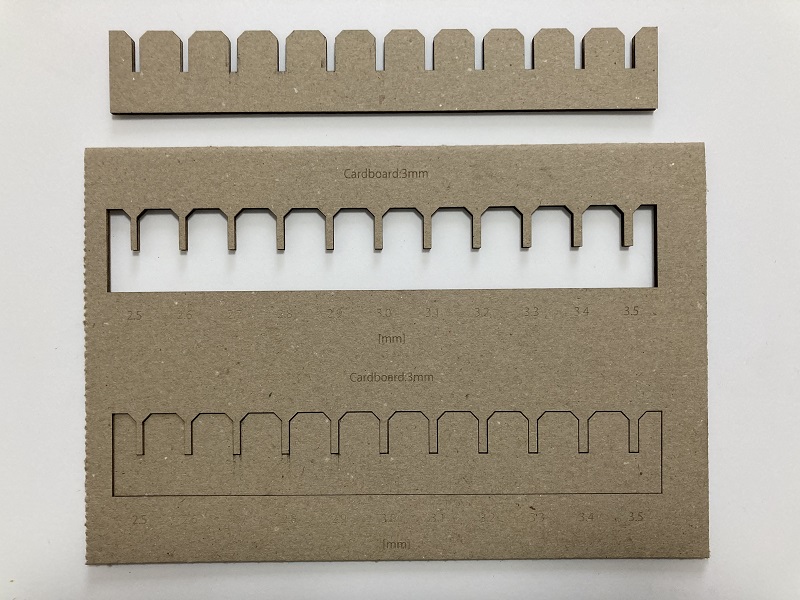
I measured the cut piece and found that the slots were just in size as designed.

I also measured the cut remains and found that it was Approx. 0.15mm nallow per line compared with the original design. I guess that the value shows a diameter of the laser beam.
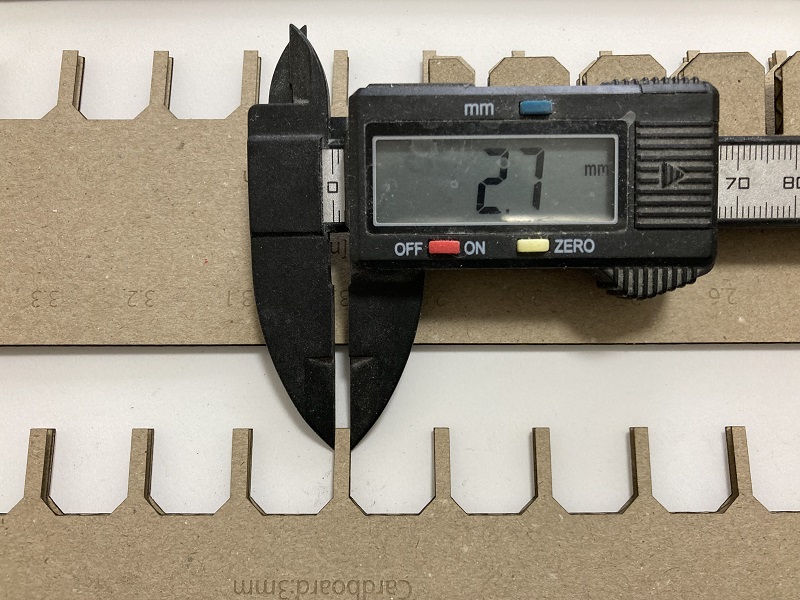
I tried the test fit using a couple of the test piece. They fit best at 2.8mm. It would indicate the actual thickness of the card board.
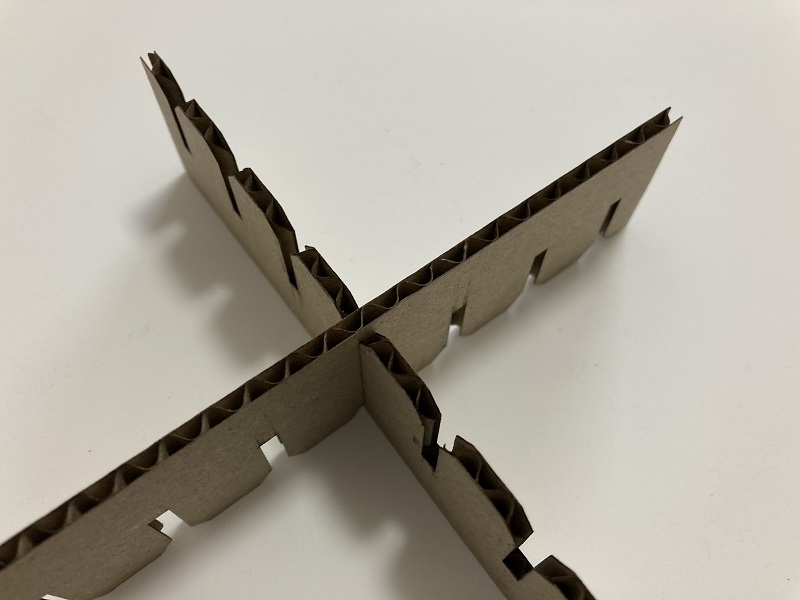
Troubles I encountered and solutions I found:
Trouble: Laser beam didn’t cut through the material
Solution: I checked ‘Cut job’ option in cutting software setting menu and it went well